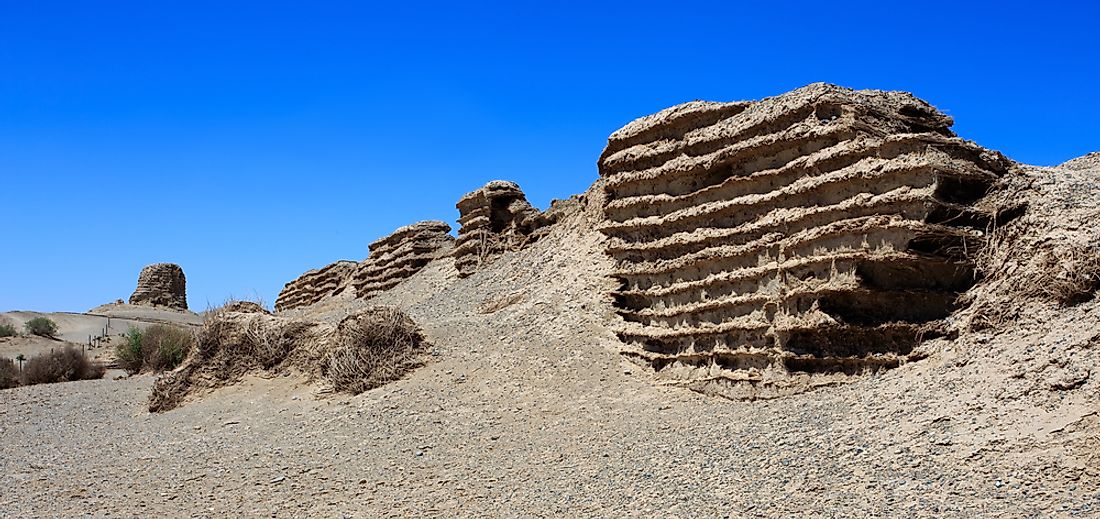What Was the Han Dynasty?

The Han was an imperial dynasty in China which ruled from 206 BC. to 220 A.D. Historically it was divided into the Western, or Early, Han (206 BC - 25 BC), and the Eastern, or Later, Han (25-220 AD). The founder of the Han Dynasty was Liu Bang, who unified the country and created a strong centralized empire. However, the Han authorities pursued award policy to relatives and companions of extensive land holdings, and the practice that later paved the way for division of the country. Reach and prosperous relatives created fiefdoms where they had their own army, finance and administration, and later turned into an independent kingdom, opposing the center. The central government was strengthened during the reigns of such emperors as Jing Di (156-141 BC) and, especially, Wu Di (140-87 BC) to follow.
4. Han Territories And Accomplishments
Immediately after his statement on the imperial throne, Liu Xiu, known through history under the name of Guang Wu (25-57), proclaimed an era of peace, and announced that he would act like his ancestor Liu Bang. He knew that in a climate of blazing nationwide uprisings and economic disruption the use of force could not be a solution. By the time of Guang Wu economic value of areas in the Weihe basin fell due to the destruction of the Weibei irrigation system and gave way to the area located to the east of Chang'an in the territory of modern Henan, Shandong, and South Hebei. Irrigation facilities that have been established by local authorities of these areas have contributed to their economic recovery. Economically the area located on the territory of the Great China Plain in the beginning of 1st Century has become the most developed. In connection with the growing economic importance of these areas, Wu moved the capital of the empire to the east, to the city of Luoyang. It had been ordered to officials to promote the agriculture and sericulture (the commercial raising of caterpillars to produce silk). For the poor, who had no land, plots were distributed on favorable public land conditions (the law of Gong-tian). To serve interests of the Han Dynasty, Confucianism was delivered, which became based from Wu and the official ideology.
3. Challenges and Controversies
The beginning of 2nd Century saw the weakening of military power of the Han. Even during the wars of the talented commander Ban Chao the court dignitaries insisted on cessation of campaigns in East Turkestan. In 73 AD, at the time of an intense struggle for the conquest of the western border, the commander received an unexpected order to return to Luoyang. Ban Chao disobeyed imperial orders and acted independently for 14 years. At this time the contradictions among the ruling class considerably intensified. Two political groups were fighting at court: "eunuchs" and "scientists". But the most damaging to the empire was the uprising of "Yellow Turbans", which began in the 2nd month, 184 AD. Han's army sent for suppression of the uprising was 360 thousand troops. But in less than ten days the uprising of vast territory of Shandong to Sichuan was blazing as the flame. The main areas of uprising were Hebei, Henan, Shandong, and Hubei. Lacking sufficient military experience, the rebels could not consolidate their victory for a long time. But the outcome of this and subsequent revolts continued up until the year 220, led to decline of Han empire, which lasted longer than any previous or subsequent kingdoms of ancient China.
2. Decline and Demise
Despite the successes of the Han, from the beginning of the 2nd Century BC onward, natural disasters showered upon the Han Empire, followed by epidemics and crop failures. Special officials were sent in different areas of the empire to estimate the number of people living in extreme poverty, vagrancy or dying of starvation. Officials have denounced that people got "shallow fields", and many were not able to feed themselves, some areas turned out to be abandoned with almost no family around. By the middle of the 2nd Century severe famine covered all the central regions of the empire.
1. Historical Significance and Legacy
The Han Dynasty waged conquest-motivated wars to the north and northwest against the Qiang tribes, in the east and north-east against Korea, thus significantly expanded the borders of the empire. At the end of the 1st Century BC and beginning of the 1st Century AD, the Hun empire lost trading on the "Great Silk Road". In 73 AD in the campaign against Qiang, the Hun gathered a strong army and "The Great Silk Road", closed to China for 65 years was re-conquered by the Han army. With submission of North Vietnam which provided the trade route to India, China established regular contacts with Western countries on the southern route. They also utilized the sea route leading to India and farther to the west, up to the Roman Empire. The lively trade was conducted by way of the famous "Great Silk Road", especially trading and communications with Central Asia. Silk, ceramics, iron, and lacquer were taken to the West by Chinese traders. Through Bactria and Parthia, Chinese goods penetrated into the Roman Empire. Foreign merchants were delivering to China mules, horses, camels, woolen garments, carpets, leather, glass, precious stones and artisan objects, as well as grapes, pomegranates, saffron, and alfalfa. It is also a known fact that, on behalf of the Han State, the Han ethnic group of Chinese was named.











